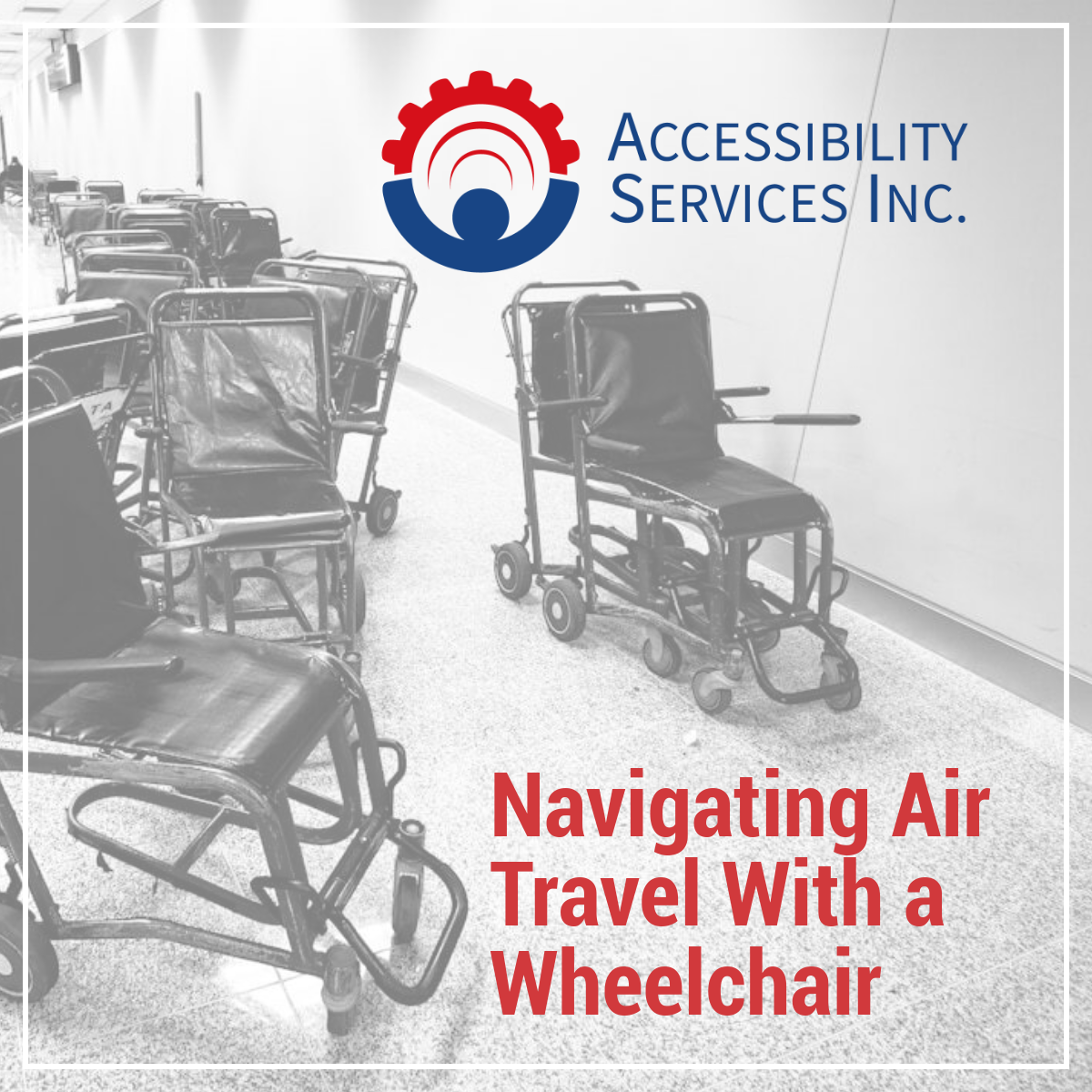Navigating Air Travel With a Wheelchair
Airlines Must Comply with ADA Requirements; There Are Also Steps You Can Take To Ensure All of Your Needs Are Met
Traveling by air should be a seamless and enjoyable experience for all passengers, including individuals with disabilities. However, wheelchair users often face a myriad of concerns and anxieties when flying:
- How will I get to my seat?
- Will they lose or damage my wheelchair?
- Can I use the restroom on the plane?
- Will they leave me on the plane?
- What if I miss my connecting flight?
- Is my oxygenator FAA approved?
- What if we have to change routes because of weather and batteries in my oxygenator machine die?
- What if the person sitting next to me is impatient with me because my needs differ from theirs?
These are all valid concerns. The good news is that all domestic airlines must comply with the Americans with Disabilities Act (ADA) regulations on airplanes to ensure a safe and accommodating journey for everyone. The Air Carrier Access Act outlines specific requirements for airlines to follow in order to provide equal access to air travel for individuals with disabilities. Additionally, various advocacy groups, including All Wheels Up and Paralyzed Veterans of America, are actively working to improve flight travel experienced for wheelchair users and their caregivers and families.
Before embarking on your journey, there are some steps you and/or your caregivers can take to help ensure you have a pleasant, smooth, comfortable, and safe flight. Let’s take a closer look:
Pre-Flight Preparations
Requesting accommodations and alerting the airline of your needs should be done in advance to allow the airline to make necessary arrangements. This includes informing the airline of any mobility limitations or specific requests you may have during your travel.
Accessible Seats
Accessible seating options are available on most flights to accommodate passengers with disabilities. These seats are designed to provide additional space and easy access for individuals with mobility devices. It’s crucial to communicate your seating preferences and requirements to the airline when booking your ticket to secure the most suitable seat for your needs.
Security and TSA
Navigating security checkpoints and boarding procedures can be challenging for anyone, especially travelers in wheelchairs. It’s recommended to arrive at the airport early to allow ample time for security screening and boarding. Informing the airline staff of any assistance needed during these processes will ensure a smoother experience from check-in to boarding the aircraft.
Medical Equipment & Medications
If you need access to any type of medical equipment during your flight, be sure to call and inform airline staff prior to your flight. For instance, while oxygen tanks are not permitted on board, oxygenators may be used in flight, but they must be FAA approved. These units can be rented ahead of time from a medical equipment provider. Be sure any medications you need either in-flight or during your trip are placed in your carry-on baggage and stowed either under your seat or in the overhead compartment for ready access.
In-Flight Accommodations
Once onboard the aircraft, don’t be afraid to ask your flight attendants about the various accommodations they may have available to ensure your comfort and safety during the flight. Accessible lavatories are available on some airplanes to accommodate individuals with mobility limitations. Call buttons are also provided to alert the flight attendants in case of assistance or emergencies.
Communication With Flight Crew is Key
Communication with your flight crew is essential to ensure that your needs are met throughout the flight. Be sure to ask for assistance or clarification on any in-flight services or procedures. Clear communication will help your flight crew provide the necessary support to make your journey more enjoyable.
Scan the Plane
Be sure to familiarize yourself with the layout of the plane. Flight attendants are trained to assist passengers with disabilities in moving around the aircraft and accessing necessary facilities during the flight.
Bring Your Service Animal
Under the ADA guidelines, service animals are permitted to accompany individuals with disabilities on airplanes. It’s important to inform the airline in advance if you will be traveling with a service animal to ensure appropriate accommodations are made. Be prepared to provide the necessary paperwork and follow the guidelines set forth by the airline when traveling with service animals. Ensuring compliance with the airline’s regulations will help avoid any issues during the flight.
Arrival and Disembarkation
Upon arrival at your destination, assistance is available for passengers with disabilities to ensure a seamless transition from the aircraft to the terminal. Be sure to request wheelchair assistance in advance or upon arrival to help you with disembarking the plane and navigating the airport.
Connecting Flights
Connecting flights should be carefully planned to allow sufficient time for transfers and ensure a smooth journey to your final destination. Airlines offer services to help passengers with disabilities transfer between flights and provide necessary support during layovers.
Ground Transportation
Ground transportation staff at the airport are available to assist you with in finding accessible ground transportation options.
As airlines continue to improve accessibility and accommodations for passengers with disabilities, it’s important to advocate for equal access and inclusive travel experiences for all individuals. By prioritizing ADA compliance and implementing best practices for accommodating passengers with disabilities, airlines are creating a more welcoming and inclusive environment for all travelers.
Remember, when flying, it’s essential to communicate your needs and preferences to the airline in advance to ensure a smooth and enjoyable journey. Actively working with airline staff, the flight crew, and fellow passengers helps ensure an inclusive and enjoyable experience for everyone.
Happy traveling!!





